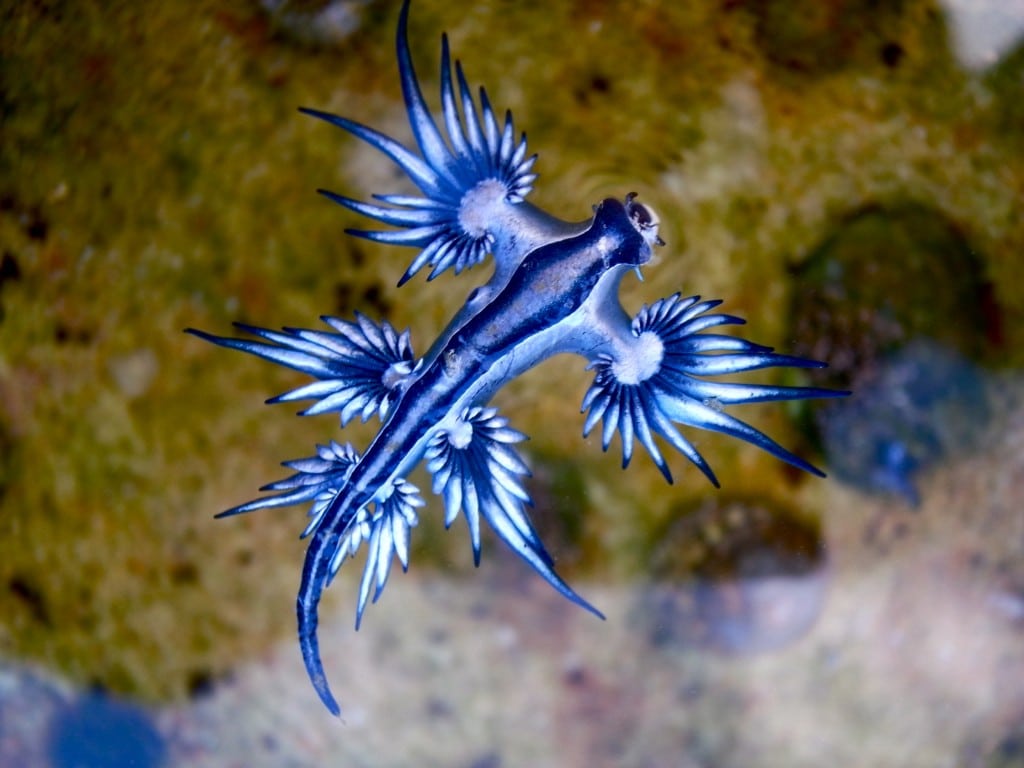About Blue dragons
- The blue dragon (Glaucus atlanticus) is a type of mollusk known as a nudibranch.
- They also are known as blue sea slugs, blue angels, and sea swallows.
- It rarely grows larger than three centimeters long.
- An air bubble stored in its stomach keeps the blue dragon afloat.
- Distribution: It can be found drifting on the surface of the Atlantic, Pacific and Indian oceans in temperate and tropical waters.
- Diet:
- They feed on venomous siphonophores such as the Portuguese man-o-war and bluebottle, which also occur in ocean surface waters.
- The dragons appear immune to the nematocysts – stinging cells – of these jellyfish-like creatures.
- They incorporate these cells into multiple finger-like structures protruding from their body which provides them with a potent form of protection from predators.
- The slug isn’t venomous all on its own, however, it stores the stinging nematocysts created by the creatures on which it feeds.
- Its sting can cause problems, especially to children and elderly.
- One sting from this little creature can lead to nausea, pain, vomiting, acute allergic contact dermatitis, and post-inflammatory hyperpigmentation.
- They are hermaphrodites, meaning they have both male and female reproductive organs.
Q1) What is Mollusk?
It is any soft-bodied invertebrate of the phylum Mollusca, usually wholly or partly enclosed in a calcium carbonate shell secreted by a soft mantle covering the body. Along with the insects and vertebrates, it is one of the most diverse groups in the animal kingdom, with nearly 100,000 described species.
Source: Beachgoers, beware! Venomous blue dragons spotted near seashore in Besant Nagar
Last updated on June, 2025
→ UPSC Notification 2025 was released on 22nd January 2025.
→ UPSC Prelims Result 2025 is out now for the CSE held on 25 May 2025.
→ UPSC Prelims Question Paper 2025 and Unofficial Prelims Answer Key 2025 are available now.
→ UPSC Calendar 2026 is released on 15th May, 2025.
→ The UPSC Vacancy 2025 were released 1129, out of which 979 were for UPSC CSE and remaining 150 are for UPSC IFoS.
→ UPSC Mains 2025 will be conducted on 22nd August 2025.
→ UPSC Prelims 2026 will be conducted on 24th May, 2026 & UPSC Mains 2026 will be conducted on 21st August 2026.
→ The UPSC Selection Process is of 3 stages-Prelims, Mains and Interview.
→ UPSC Result 2024 is released with latest UPSC Marksheet 2024. Check Now!
→ UPSC Toppers List 2024 is released now. Shakti Dubey is UPSC AIR 1 2024 Topper.
→ Also check Best IAS Coaching in Delhi
























